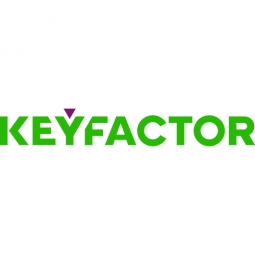
Technology Category
- Functional Applications - Inventory Management Systems
- Platform as a Service (PaaS) - Application Development Platforms
Applicable Industries
- Finance & Insurance
- National Security & Defense
Applicable Functions
- Warehouse & Inventory Management
Use Cases
- Cybersecurity
- Inventory Management
Services
- Cybersecurity Services
- System Integration
The Customer
M&T Bank
About The Customer
M&T Bank is a Fortune 500 American bank based in Buffalo, New York, with more than $155 billion in assets. Founded in 1856, M&T Bank has been a community-driven company from its roots, originally serving manufacturers and trades and now operating more than 780 branches across the eastern United States. In 2021, the bank unveiled M&T Tech Hub, a new initiative to drive collaboration and innovation with the people and businesses they serve. The bank is focused on transforming its digital footprint and embracing agility to meet constantly evolving customer needs.
The Challenge
M&T Bank, a Fortune 500 American bank, was focused on transforming its digital footprint and embracing agility to meet constantly evolving customer needs. However, with digital transformation came the need for digital trust and security. The bank relied on Public Key Infrastructure (PKI) and digital certificates to securely connect devices and applications across its digital footprint. Over the years, technology and cryptography evolved significantly, creating new challenges. M&T Bank initially partnered with Keyfactor in 2010 to migrate from SHA-1 to SHA-2 and re-build their entire PKI. However, as the number of devices and workloads expanded rapidly, so did the number of certificates required across their environment. The increasing volume and speed at which certificates were issued made it difficult to keep track of them.
The Solution
M&T Bank needed a certificate management solution and turned to Keyfactor, who had previously helped them re-build their PKI. The bank needed certificate discovery and inventory, continuous visibility of certificates across multiple platforms and CA solutions, and a solution that would scale. In 2014, M&T rolled out Keyfactor Command to get better visibility of their certificate inventory and set basic alerts to remind users to renew certificates before expiration. As the product evolved, M&T continued to roll out new capabilities, which now include network discovery, self-service enrollment, APIs, and automated workflows for certificate renewal and provisioning.
Operational Impact
Quantitative Benefit

Case Study missing?
Start adding your own!
Register with your work email and create a new case study profile for your business.
Related Case Studies.

Case Study
Real-time In-vehicle Monitoring
The telematic solution provides this vital premium-adjusting information. The solution also helps detect and deter vehicle or trailer theft – as soon as a theft occurs, monitoring personnel can alert the appropriate authorities, providing an exact location.“With more and more insurance companies and major fleet operators interested in monitoring driver behaviour on the grounds of road safety, efficient logistics and costs, the market for this type of device and associated e-business services is growing rapidly within Italy and the rest of Europe,” says Franco.“The insurance companies are especially interested in the pay-per-use and pay-as-you-drive applications while other organisations employ the technology for road user charging.”“One million vehicles in Italy currently carry such devices and forecasts indicate that the European market will increase tenfold by 2014.However, for our technology to work effectively, we needed a highly reliable wireless data network to carry the information between the vehicles and monitoring stations.”

Case Study
Safety First with Folksam
The competitiveness of the car insurance market is driving UBI growth as a means for insurance companies to differentiate their customer propositions as well as improving operational efficiency. An insurance model - usage-based insurance ("UBI") - offers possibilities for insurers to do more efficient market segmentation and accurate risk assessment and pricing. Insurers require an IoT solution for the purpose of data collection and performance analysis

Case Study
Data Capture for Afghanistan Forces
Electronic equipments on the field of Afghanistan provided information on the status of the vehicle and to identify potential threats surrounding it to the British Force. The monitoring and interpretation of this data requires robust and sophisticated digitization for data capture and communication.

Case Study
Smooth Transition to Energy Savings
The building was equipped with four end-of-life Trane water cooled chillers, located in the basement. Johnson Controls installed four York water cooled centrifugal chillers with unit mounted variable speed drives and a total installed cooling capacity of 6,8 MW. Each chiller has a capacity of 1,6 MW (variable to 1.9MW depending upon condenser water temperatures). Johnson Controls needed to design the equipment in such way that it would fit the dimensional constraints of the existing plant area and plant access route but also the specific performance requirements of the client. Morgan Stanley required the chiller plant to match the building load profile, turn down to match the low load requirement when needed and provide an improvement in the Energy Efficiency Ratio across the entire operating range. Other requirements were a reduction in the chiller noise level to improve the working environment in the plant room and a wide operating envelope coupled with intelligent controls to allow possible variation in both flow rate and temperature. The latter was needed to leverage increased capacity from a reduced number of machines during the different installation phases and allow future enhancement to a variable primary flow system.

Case Study
Automated Pallet Labeling Solution for SPR Packaging
SPR Packaging, an American supplier of packaging solutions, was in search of an automated pallet labeling solution that could meet their immediate and future needs. They aimed to equip their lines with automatic printer applicators, but also required a solution that could interface with their accounting software. The challenge was to find a system that could read a 2D code on pallets at the stretch wrapper, track the pallet, and flag any pallets with unread barcodes for inspection. The pallets could be single or double stacked, and the system needed to be able to differentiate between the two. SPR Packaging sought a system integrator with extensive experience in advanced printing and tracking solutions to provide a complete traceability system.

Case Study
Transforming insurance pricing while improving driver safety
The Internet of Things (IoT) is revolutionizing the car insurance industry on a scale not seen since the introduction of the car itself. For decades, premiums have been calculated using proxy-based risk assessment models and historical data. Today, a growing number of innovative companies such as Quebec-based Industrielle Alliance are moving to usage-based insurance (UBI) models, driven by the advancement of telematics technologies and smart tracking devices.



